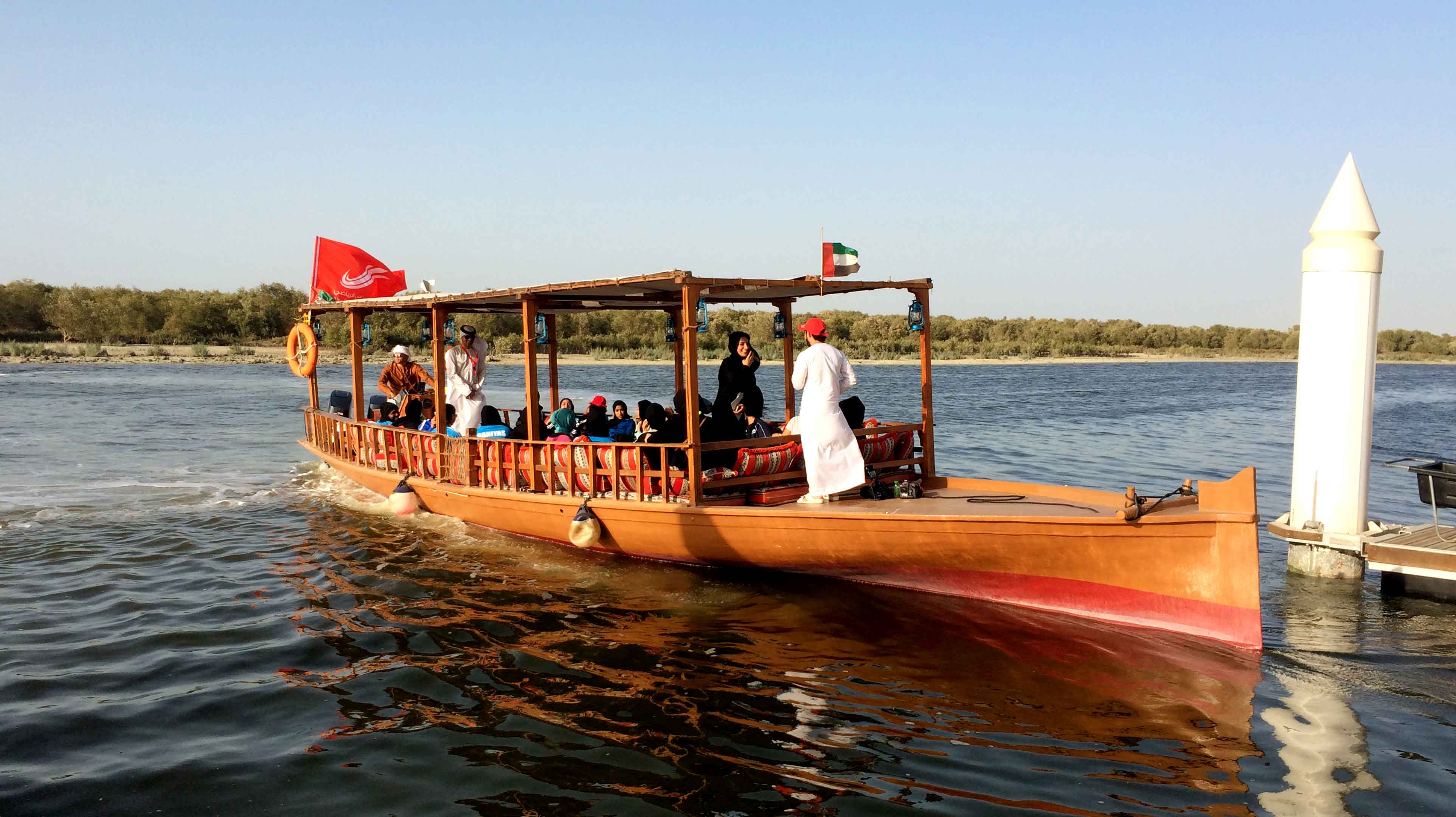See All
Abu Dhabi’s history is deeply connected to the sea, with the emirate being an archipelago made up of hundreds of islands. The Abu Dhabi Pearl Journey offers travellers an authentic look at the pearling industry in the Arabian Gulf, an industry that contributed to not just the economic growth of Abu Dhabi, but the whole of the UAE. Archaeologists have found evidence of pearling dating back thousands of years here, with the country’s precious sea treasures being traded around the world − from Rome to Venice, Sri Lanka to India − and evidence of UAE pearls even showing up in Viking possessions. The world’s oldest-known natural pearl, which was 8,000 years old, was also found in Abu Dhabi in 2019.
This unique tour begins at the Anantara Eastern Mangroves Abu Dhabi Hotel and lasts up to 90 minutes. Guests climb aboard a Jalboot, a traditional pearling dhow, and set off on a leisurely cruise along the quiet channel lying between Abu Dhabi and Hudayriat Island.
Seated on traditional Arabian floor cushions, guests enjoy local Arabic coffee and dates while Emirati guides explain how the country’s forefathers dived for pearls, and how they used them to make jewellery. On-theme snacks are served as crew members sing traditional Emirati sea-faring songs.
Frequently asked questions about the Pearl Journey
Why is pearl diving important to the history and culture of the UAE?
Well before the oil boom, the pearl industry contributed to not just the economic growth of Abu Dhabi, but the whole of the UAE. Pearl diving was the major profession for most of the population and was a source of sustenance to local families.
Why did pearl diving stop in the UAE?
In the early 1900’s the Japanese had discovered a way to produce artificial pearls, which had a direct impact on the pearl industry in the UAE. That and the discovery of oil in the Arabian Peninsula caused members of the pearl diving industry to change profession with some moving into the oil sector.
Does pearl diving still exist in the UAE?
While pearl diving is no longer a necessity, it remains an important part of the Emirati culture.
